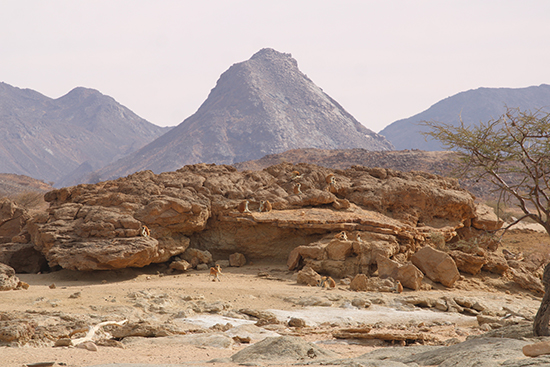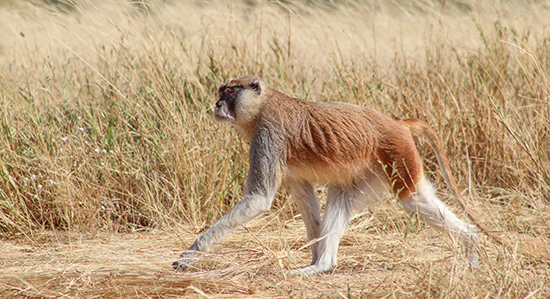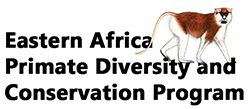
Aïr patas monkey
New publication Primate Conservation 39 (2025)
Distribution, Abundance, and Conservation Status of the Aïr Patas Monkey Erythrocebus patas villiersi Dekeyser, 1950 (Primates: Cercopithecidae) in the Aïr Massif-Gadabedji Region, Niger
Yvonne A. de Jong, Adouma Alghoubas, Abdoul Razack Moussa Zabeirou, Mahamane Hassane and Thomas M. Butynski
Abstract: The Aïr patas monkey Erythrocebus patas villiersi is regarded as isolated and endemic to the Aïr Massif of central north Niger, West Africa. The limits of the geographic range of E. p. villiersi are poorly understood, there is no detailed description of the coloration and pattern of its pelage, and its abundance, ecology, behavior, and threats remain unstudied. As a result, this subspecies is listed as ‘Data Deficient’ on The IUCN Red List of Threatened Species. Based on field observations and photographs, we describe the phenotype of the adult male E. p. villiersi. Spatial data were collected from the literature, museums, colleagues, naturalists, local experts, and online resources to assess its geographic range. The geographic range was overlaid with ArcGIS datasets for altitude, rainfall, temperature, and ecoregions.

Aïr patas monkeys Erythrocebus patas villiersi near Taganjir-Ajirou Spring in the proposed Mount Egalagh Communal Nature Reserve, Aïr Massif, central north Niger. Photograph by Adouma Alghoubas.
Erythrocebus p. villiersi is phenotypically distinctive from the western patas monkey Erythrocebus patas patas, the main diagnostic traits being the shape and color of the browband, temporal band, color of the face, and sides of the base of the tail. We found that E. p. villiersi is not endemic to the Aïr Massif but occurs in five populations in rocky landscapes, vegetated valleys, and agricultural lands north of 15.02°N (Gadabedji) and south of 19.99°N (Gréboun). The confirmed geographic range is ~51,000 km². Altitudinal range is 415–2,022 m asl, mean annual rainfall range is 4–31 cm, and mean annual temperature range is 27–35°C. Erythrocebus p. villiersi appears to be highly reliant on perennial water sources. During the hot and dry season, it is most often encountered near villages, farms, and sources of water. Erythrocebus p. villiersi is the most common non-human primate in the Aïr-Gadabedji Region. There are currently roughly 2,000–3,500 individuals; 1,500–2,000 in the Aïr Region and 500–1,500 in the Gadabedji Region.

Adult male Aïr patas monkey Erythrocebus patas villiersi, Gadabedji Biosphere Reserve, central Niger. Photograph by Hassane Mahamane.
The root cause of all threats to the long-term survival of E. p. villiersi is the rapid growth of the human population in the Aïr-Gadabedji Region. While E. p. villiersi is not a target species for poachers, it is part of the by-catch of poaching, hunted by domestic dogs, and persecuted in response to crop raids. Access to perennial water is increasingly difficult for E. p. villiersi. About 63% of the geographic range is within a protected area or proposed protected area. Wildlife numbers seem to be recovering with the gazettement of reserves and improved security. We suggest reassessing E. p. villiersi as ‘Near Threatened’.

